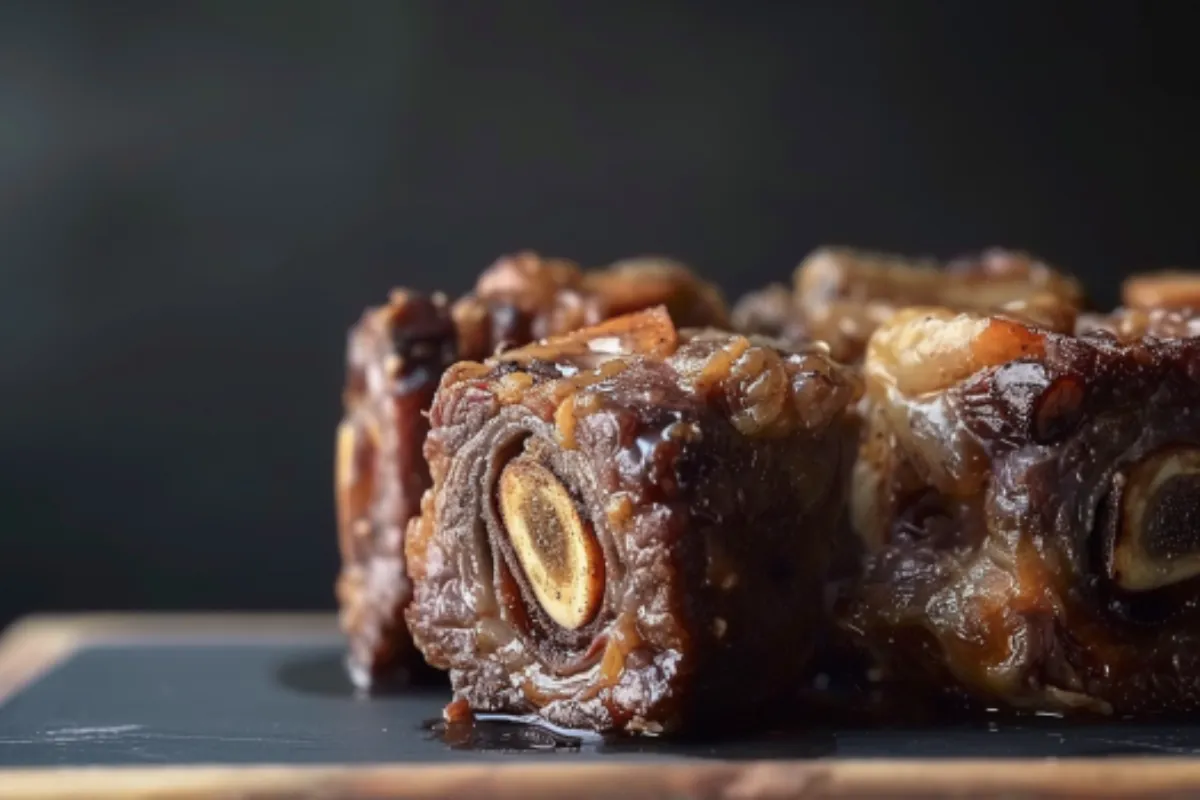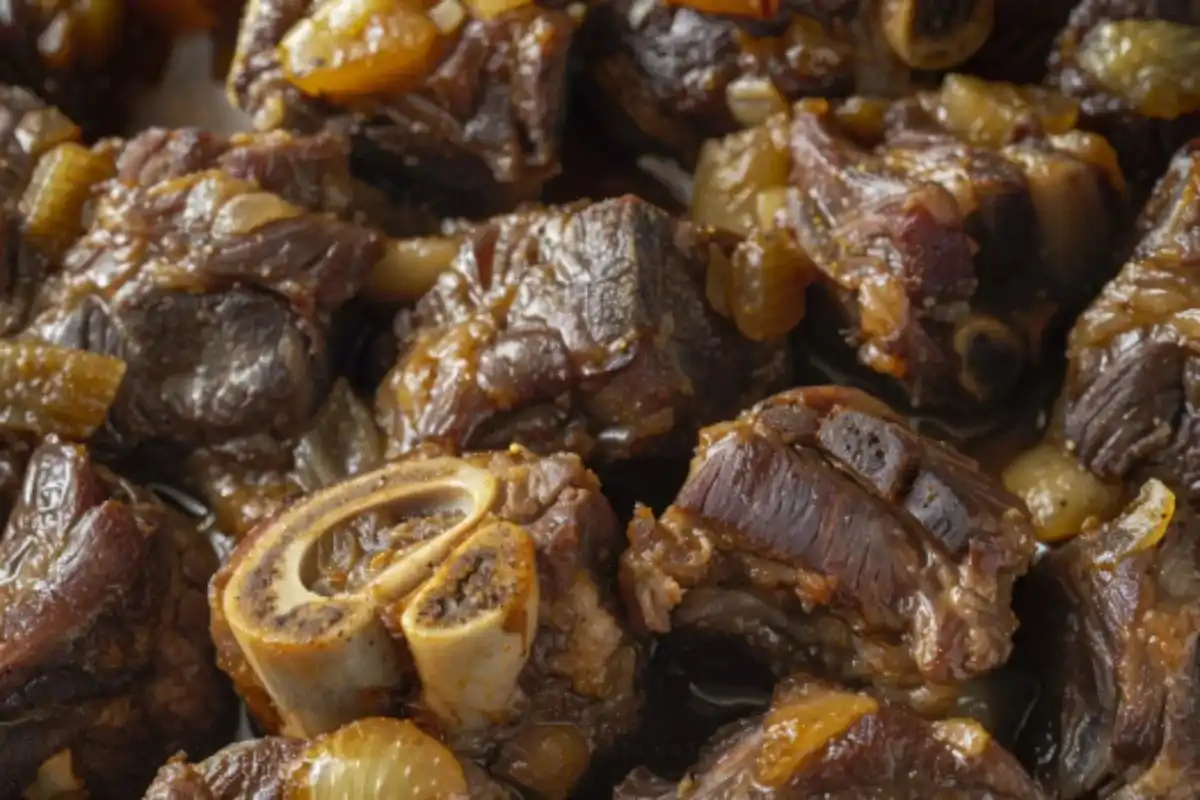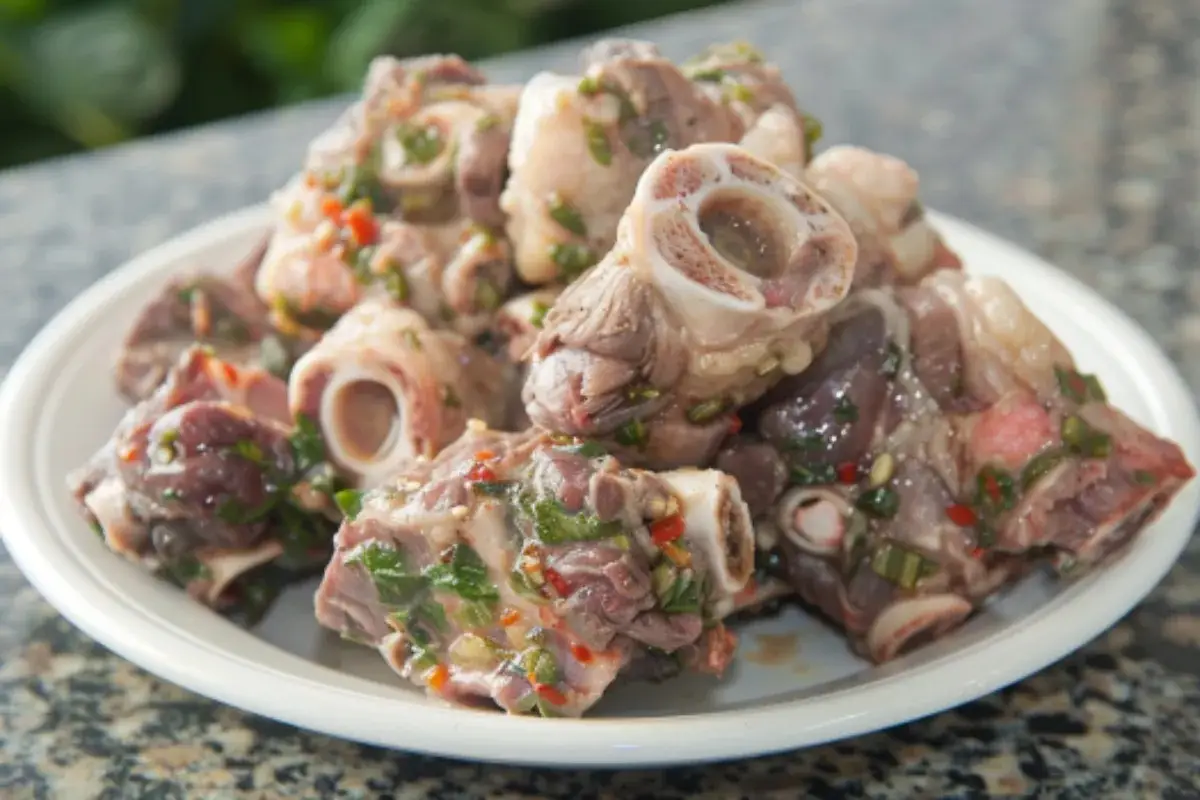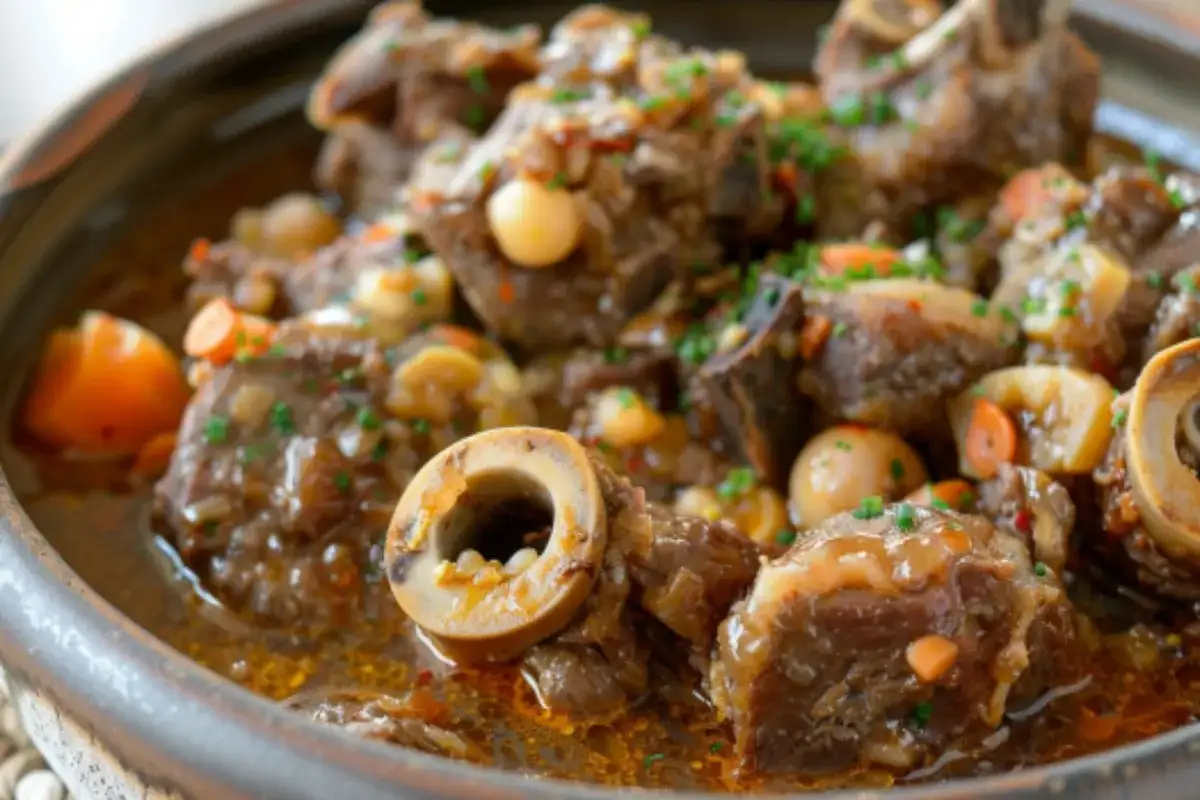Oxtails are renowned for their deep, rich flavor, but they also require time, patience, and the right cooking techniques to achieve tender, succulent results. The name “oxtail” comes from the tail of cattle, traditionally from oxen, though today it usually refers to the tail of a cow. Given its unique structure rich in bones, connective tissues, and fat cooking oxtails is unlike preparing most other cuts of beef. Achieving perfectly tender oxtails is as much about the process as it is about the timing.
In this article, we will explore all aspects of cooking oxtails, from the best methods to use to the factors that influence cooking time. We will dive deep into traditional techniques, modern approaches, and some expert tips for elevating your oxtail dish to the next level.
What Are Oxtails and Why Do They Take So Long to Get Tender?
Before we dive into the cooking techniques, let’s take a moment to understand what oxtails are and why they require such long cooking times. Oxtail is literally the tail of a cow, typically cut into sections, each containing bone, marrow, fat, and meat. Due to its structure, it’s a tough cut of meat that requires slow cooking to break down the connective tissues and collagen. Once cooked properly, the result is a rich, gelatinous dish that’s full of deep beefy flavor.
Historically, oxtail was considered a cheap cut, used in soups and stews by those looking to make the most out of every part of the animal. However, in recent years, its popularity has grown, and it has become a staple in many high-end dishes across various cultures, from Jamaican stews to French braises.
Factors Affecting How Long It Takes for Oxtails to Get Tender

There are several factors that affect how long it takes to cook oxtails until tender. These include the size of the oxtail pieces, the cooking method, and the preparation techniques. Here are the key factors that will influence your cooking time:
- Size and Quality of Meat: Larger pieces of oxtail will naturally take longer to cook than smaller ones. The quality of the meat also matters, as higher-quality cuts with more fat will break down differently than leaner pieces.
- Cooking Method: Different cooking methods yield different results and require varying amounts of time. For instance, a slow cooker or stovetop method might take several hours, while using a pressure cooker can significantly reduce the cooking time.
- Preparation: Properly seasoning, browning, and adding enough liquid to the cooking pot can make a significant difference in the final texture and flavor of your oxtails. If the oxtails are under-seasoned or lack enough liquid, they might not tenderize as efficiently.
How to Cook Oxtails on the Stove for Perfect Tenderness
The stovetop method is one of the most traditional ways to cook oxtails and allows for greater control over the heat and consistency of the dish. Although it requires more attention than some other methods, it can produce exceptional results when done correctly. Here’s how to do it:
Ingredients:
2 pounds oxtails
2 tbsp vegetable oil
Salt and pepper to taste
1 onion, chopped
3 cloves garlic, minced
4 cups beef broth (or enough to cover the oxtails)
1 bay leaf
1 sprig of thyme
2 carrots, chopped (optional)
2 celery stalks, chopped (optional)
1 tbsp tomato paste (optional)
Instructions:
Season and Brown the Oxtails: Begin by seasoning the oxtails generously with salt and pepper. In a large, heavy pot, heat the vegetable oil over medium-high heat. Brown the oxtails on all sides, ensuring they get a nice, caramelized crust. This step is crucial for locking in flavor.
Add Aromatics: Once the oxtails are browned, remove them from the pot and set them aside. In the same pot, add the chopped onions, garlic, carrots, and celery. Cook for about 5 minutes, stirring occasionally, until the vegetables start to soften.
Deglaze the Pot: If you are using tomato paste, add it to the pot and cook for another minute. Then, pour in a small amount of beef broth to deglaze the pot, scraping up any browned bits from the bottom. This step adds extra flavor to the dish.
Simmer the Oxtails: Return the oxtails to the pot and add enough beef broth to fully cover the meat. Add the bay leaf and thyme. Bring the pot to a boil, then reduce the heat to low. Cover the pot and let the oxtails simmer gently for 3 to 4 hours, or until the meat is tender and falling off the bone.
Check and Adjust: Periodically check the pot to ensure the oxtails are fully submerged in liquid. If the liquid level gets too low, add more broth or water as needed. After 3 to 4 hours, test the oxtails with a fork. If the meat easily pulls away from the bone, they are done.
Serve: Remove the bay leaf and thyme sprig, then serve the oxtails with the braising liquid over mashed potatoes, rice, or beans.
This method is perfect for those who enjoy the hands-on process of cooking and want to build deep, complex flavors in their dish. The key to this method is low and slow cooking, ensuring the connective tissues break down fully, resulting in tender meat and a rich, flavorful sauce.
Using a Slow Cooker: How Long Does It Take for Oxtails to Get Tender?
The slow cooker is an excellent option for those who want to set it and forget it. This method allows the oxtails to cook gently over several hours, breaking down the tough collagen and connective tissues into melt-in-your-mouth tenderness. The result is a rich and hearty dish with minimal effort.
Ingredients:
2 pounds oxtails
1 onion, chopped
2 cloves garlic, minced
4 cups beef broth
1 bay leaf
1 sprig thyme
2 carrots, chopped (optional)
2 tbsp Worcestershire sauce (optional)
Salt and pepper to taste
Instructions:
Prep the Oxtails: Season the oxtails generously with salt and pepper. If you prefer, you can brown the oxtails in a skillet before placing them in the slow cooker. While this step is optional, it adds an extra depth of flavor to the dish.
Add Ingredients to Slow Cooker: Place the chopped onion, garlic, carrots, and thyme into the slow cooker. Add the oxtails on top of the vegetables, then pour in the beef broth and Worcestershire sauce. Make sure the oxtails are fully submerged in liquid.
Set and Forget: Cover the slow cooker and set it to low. Cook for 6 to 8 hours, checking occasionally to ensure there is enough liquid in the pot. If necessary, add more broth or water.
Final Touches: After 6 to 8 hours, the oxtails should be tender and falling off the bone. Test with a fork to make sure they are cooked through. Adjust the seasoning with more salt and pepper if needed, then serve.
The slow cooker method is perfect for busy days when you want to come home to a ready-to-eat meal. The long cooking time allows the flavors to meld together beautifully, resulting in a rich and satisfying dish.
Pressure Cooking Oxtails: How to Get Tender Oxtails Fast

For those short on time, the pressure cooker or Instant Pot is a game-changer. By cooking the oxtails under high pressure, you can achieve tender, flavorful results in a fraction of the time it would take with traditional methods. While the flavor might not be quite as deep as with a long, slow cook, the time savings make it worth it.
Ingredients:
2 pounds oxtails
1 tbsp olive oil
Salt and pepper to taste
1 onion, chopped
3 cloves garlic, minced
4 cups beef broth
1 bay leaf
1 sprig of thyme
2 carrots, chopped (optional)
1 tbsp soy sauce (optional)
Instructions:
Sear the Oxtails: Set your pressure cooker to sauté mode and heat the olive oil. Season the oxtails with salt and pepper, then brown them on all sides in the pot. This step adds extra flavor to the dish.
Cook the Aromatics: Once the oxtails are browned, remove them from the pot. Add the chopped onions, garlic, and carrots to the pot and sauté for a few minutes until they soften.
Add Liquid and Seasonings: Return the oxtails to the pot and add enough beef broth to fully cover the meat. Add the bay leaf, thyme, and soy sauce (if using). Secure the lid on the pressure cooker.
Pressure Cook: Set the pressure cooker to high pressure for 45 minutes to 1.5 hours, depending on the size of the oxtails and your desired level of tenderness. Once the cooking time is up, allow the pressure to release naturally for about 10 minutes before opening the pot.
Serve: Remove the bay leaf and thyme sprig, then serve the oxtails with the broth over your favorite side dish.
The pressure cooker method is incredibly efficient and produces tender oxtails with minimal effort. This is an excellent option for weeknight dinners when you need something fast but still flavorful.
Oven-Braised Oxtails: How Long It Takes for Oxtails to Get Tender
Braising oxtails in the oven is a tried-and-true method that creates deep, complex flavors and tender meat. This method involves slow cooking the oxtails in a covered dish with liquid, allowing the heat to circulate evenly around the meat.
Ingredients:
- 2 pounds oxtails
- 2 tbsp olive oil
- Salt and pepper to taste
- 1 onion, chopped
- 2 cloves garlic, minced
- 4 cups beef broth
- 1 bay leaf
- 1 sprig of thyme
- 1 cup red wine (optional)
- 1 tbsp tomato paste (optional)
- 2 carrots, chopped (optional)
Instructions:
Preheat and Brown the Oxtails: Preheat your oven to 275°F (135°C). In a large oven-safe pot or Dutch oven, heat the olive oil over medium heat. Season the oxtails with salt and pepper, then brown them on all sides. This step adds essential flavor to the dish.
Cook the Vegetables: Remove the oxtails from the pot and set them aside. Add the onions, garlic, carrots, and tomato paste (if using) to the pot. Sauté for about 5 minutes, until the vegetables are softened.
Add Liquid and Seasonings: Deglaze the pot with red wine, scraping up any browned bits from the bottom. Then, add the beef broth, bay leaf, and thyme. Return the oxtails to the pot, making sure they are fully submerged in the liquid.
Braise in the Oven: Cover the pot and transfer it to the preheated oven. Let the oxtails braise for 3 to 4 hours, checking occasionally to ensure the liquid level stays consistent. Add more broth or water if needed.
Serve: After 3 to 4 hours, the oxtails should be tender and falling off the bone. Remove the bay leaf and thyme sprig, then serve the oxtails with the braising liquid over mashed potatoes, rice, or polenta.
Oven-braising is ideal for those who want to infuse their dish with deep, concentrated flavors. The long, slow cook in the oven ensures that the meat becomes tender while the flavors meld together beautifully.
Enhancing Flavor: How to Make Oxtails Tender and Flavorful
While oxtails are flavorful on their own, there are many ways to enhance the dish further by adding other ingredients. Consider adding these components to boost the flavor profile of your oxtail dish:
- Herbs and Spices: Fresh thyme, rosemary, bay leaves, and parsley are commonly used herbs that pair well with the rich flavor of oxtails. Additionally, spices like paprika, allspice, and chili powder can add a subtle kick to the dish.
- Broths and Liquids: Beef broth is a staple when cooking oxtails, but adding red wine, soy sauce, or even a splash of vinegar can deepen the flavor of the braising liquid.
- Vegetables: Carrots, celery, onions, and garlic are classic choices for enhancing the flavor of oxtails. Root vegetables such as parsnips or turnips can also add a sweetness that complements the rich meat.
- Tomatoes and Paste: Tomato paste or diced tomatoes can add acidity and richness to the braising liquid, cutting through the heaviness of the dish.
For a richer dish, you can also add a few tablespoons of Worcestershire sauce or balsamic vinegar during the cooking process to create a deeper, more robust flavor.
Cultural Variations of Oxtail Dishes
One of the most exciting aspects of cooking oxtails is the variety of cultural traditions that have developed around this cut of meat. From Caribbean to Asian to European cuisines, oxtails are used in a wide range of dishes, each with its unique twist on preparation and flavoring.
Jamaican Oxtail Stew
In Jamaican cuisine, oxtail is typically slow-cooked in a rich stew seasoned with garlic, scallions, thyme, and Scotch bonnet peppers. This dish is often served with rice and peas, making for a hearty and flavorful meal. The inclusion of the Scotch bonnet pepper adds a significant amount of heat, which balances out the richness of the oxtails. Try this authentic Jamaican oxtail recipe for a cultural twist.
Korean Oxtail Soup (Kkori Gomtang)
Korean cuisine features a lighter oxtail dish known as Kkori Gomtang, a traditional soup made by simmering oxtails for several hours to create a flavorful broth. The soup is typically served with scallions, garlic, and a side of rice. The long cooking time allows the broth to develop a deep, rich flavor while the meat becomes tender and flavorful.
French Oxtail Braise (Queue de Bœuf)
In French cuisine, oxtail is often braised with red wine, vegetables, and herbs to create a dish known as Queue de Bœuf. The slow braising method ensures that the meat becomes tender while the wine reduces into a rich, flavorful sauce. This dish is often served with mashed potatoes or polenta, making it a luxurious and comforting meal.
These are just a few examples of how oxtails are used around the world. Each culture brings its unique approach to preparing this cut of meat, highlighting its versatility and rich flavor.
Common Mistakes When Cooking Oxtails and How to Avoid Tough Oxtails

Cooking oxtails can be a rewarding experience, but there are some common mistakes that can result in less-than-perfect results. Here are some of the most frequent mistakes and tips on how to avoid them:
- Not Enough Liquid: One of the most common mistakes when cooking oxtails is not using enough liquid. Oxtails need to be fully submerged in liquid throughout the cooking process to ensure that they cook evenly and become tender. If the liquid evaporates too quickly, the meat can become dry and tough. Be sure to check the liquid level periodically and add more broth or water as needed.
- Undercooking: Because oxtails are a tough cut of meat, they require long, slow cooking to break down the connective tissues and collagen. If the oxtails are not cooked long enough, the meat will be tough and chewy. Make sure to give the oxtails enough time to become tender, whether you’re using a stovetop, slow cooker, or oven method.
- Overcooking: While oxtails need to be cooked for a long time to become tender, it is possible to overcook them, especially in a slow cooker or pressure cooker. Overcooking can cause the meat to become mushy and lose its texture. To avoid this, monitor the cooking time closely and use a fork to test for doneness.
Avoiding these mistakes will help you achieve perfectly tender, flavorful oxtails every time.
How to Know When Oxtails Are Tender Enough to Serve
The key to perfectly cooked oxtails is achieving the right level of tenderness. Here are some indicators to help you determine when your oxtails are done:
- Fork Tender: One of the best ways to check if your oxtails are done is to test them with a fork. The meat should be tender enough to easily pull away from the bone with little resistance.
- Gelatinous Texture: Oxtails contain a significant amount of collagen, which breaks down during cooking and gives the meat a gelatinous texture. This is a good indicator that the meat is fully cooked.
- Appearance: The meat will have a rich, deep color when fully cooked, and the sauce or braising liquid will be thick and flavorful.
Patience is essential when cooking oxtails, as rushing the process can result in tough, chewy meat. Give the oxtails plenty of time to cook slowly, allowing the collagen and connective tissues to break down fully.
Serving Suggestions and Pairings
Oxtails are incredibly versatile and can be served with a variety of side dishes. Here are some serving suggestions and pairings to complement the rich, flavorful meat:
- Mashed Potatoes: The creamy texture of mashed potatoes pairs perfectly with the rich sauce and tender meat of oxtails.
- Rice and Beans: In many cultures, oxtails are served with rice and beans, which help to balance the richness of the meat and soak up the flavorful sauce.
- Crusty Bread: Use crusty bread to mop up the delicious braising liquid.
- Polenta: Creamy polenta is another excellent option for pairing with oxtails. Its soft, smooth texture complements the rich meat and sauce.
- Steamed Vegetables: Light, steamed vegetables such as broccoli, green beans, or spinach provide a fresh contrast to the richness of the oxtails.
If you’re looking for more inspiration on what to serve with your oxtails, check out this birria tacos recipe, which offers another way to incorporate rich, slow-cooked meats into your meals.
Frequently Asked Questions
Can I Cook Oxtails Too Long?
- Yes, oxtails can become overcooked, especially in a slow cooker or pressure cooker. If cooked too long, the meat may become mushy and lose its structure. However, because of their tough nature, oxtails are generally more forgiving with longer cooking times.
What Is the Best Cooking Method for Oxtails?
- The best method depends on your preference. Slow cooking provides the richest flavor, while the pressure cooker offers the quickest results. Stove-top and oven methods deliver reliable results but require more supervision.
Do I Need to Brown Oxtails Before Cooking?
- Yes, browning oxtails before cooking helps lock in flavor and provides a deeper, richer taste to the final dish. It also enhances the color and texture.
Why Are My Oxtails Still Tough After Cooking?
- If your oxtails are still tough after the recommended cooking time, they likely haven’t cooked long enough. Continue simmering until the meat becomes tender.
Can You Overcook Oxtails in a Slow Cooker?
- Yes, while slow cooking is ideal for oxtails, overcooking can result in the meat losing its texture and becoming too soft.

